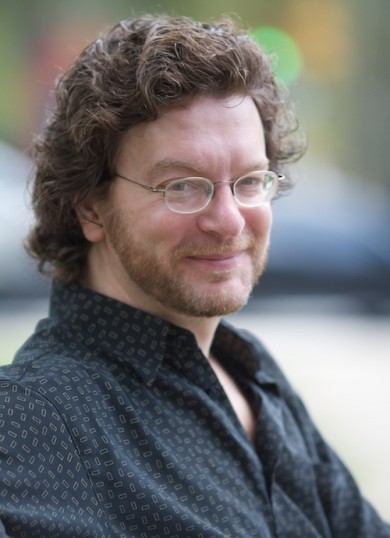Seraphic Fire to close season with Kile Smith’s new-old “Vespers”
For early music ensembles, it can be a challenge to present Renaissance and Baroque repertoire without feeling like a relic of the past. This is to some extent true for all classical music ensembles, which act as curators of a long musical tradition, but the commitment to historically informed practices, using historical instruments, can magnify the effect.
Not so for Seraphic Fire’s artistic director, Patrick Quigley, who is careful to draw a distinction between his ensemble’s model and what people often think of as an early music group.
“When people ask me if we’re an early music ensemble, I say no,” Quigley said. “We are a historically informed performance ensemble, or we are a period-appropriate, period-accurate ensemble, but it doesn’t matter what the period is.
“So when we perform contemporary music, we perform it as the composer intended it. When we do Mahler like we did last weekend, we try to get as close to the quick of Mahler as we can.
“Whatever time period we are dealing with, we try to sound like that music. We don’t try to sound like Seraphic Fire. The Seraphic Fire sound is in fact being true to every piece and every time period that we perform.”
On May 6, Seraphic Fire will present the Vespers of American composer Kile Smith, teaming up with Piffaro, the Renaissance music ensemble for whom the piece was originally written. Piffaro’s vibrant energy, said Quigley, makes them an exemplar of the very best that early music groups can offer.
“One of the real challenges when one presents Renaissance or Baroque or early classical music or Gregorian chant is the decision as to whether it’s going to be a museum or if it’s going to be as if it was written yesterday,” he said. “They have an incredible ability to perform music as if it’s new and special and this is the first time anyone’s hearing it.”
The combination of Piffaro’s flair and Seraphic Fire’s versatility makes the two groups an ideal pair for Smith’s Vespers. There is an unmistakably modernist harmonic language in Smith’s writing, but Vespers shows none of the academic opacity or pop influence that is heard in much contemporary music. This is a piece rooted firmly in the tradition of the Lutheran Renaissance—-not just in its form, but in its sound, which Smith tailored specifically to the abilities and historical instruments of Piffaro, all of whom play multiple instruments.
“I’m inspired by the works of [Heinrich] Schutz,” says the composer. “[His] choice of instrumentation between sections is key to keeping the colors interesting and to the dramatic movement of the piece. It’s not like writing for an orchestra, where everyone is there, and you can go back and forth really quickly. With this, it really changes from section to section, because people have to put instruments down, walk over and pick up another instrument.”
The restoration of a piece’s true colors through the use of authentic period instruments is what Smith believes makes the historical-performance movement so valuable, and in Vespers he writes with the particular colors and limitations of those instruments in mind.
“When you hear, say, a Mozart horn concerto played on the instrument that he wrote for, a natural horn, the natural horn has all these thumb-sticking-out colors. But Mozart wrote for that, so you hear these characteristic colors that no horn has anymore. So with the Renaissance instruments I think to really make the music pop, you’ve got to keep them moving.”
The forms of sacred music are by no means lost today, but Smith is something of an exception in that, unlike many other contemporary composers who write masses and other church music, he draws inspiration from his Lutheran faith as many great composers before him did.
“There are certainly composers who write ‘sacred music’ who don’t believe it, and they make no bones about it. But they’ll use it because it’s part of musical language, and it’s part of our western music tradition.
“But to me it’s part of my belief, and so people have said to me ‘it’s almost like you believe this stuff.’ And I say, ‘Well yeah, I do.’ But I think that’s important no matter what you do, even if it’s a secular poem, you have to really become enamored of it and really believe what the poet is saying.”
For his part, Quigley was taken with Vespers the minute he heard it, and is thrilled to be closing Seraphic Fire’s thirteenth season with Smith’s music.
“What I think is most fascinating about this work is just how reverent it is to older traditions,” said Quigley. “How attentive it is to the really wonderful things and the limitations of Renaissance wind and percussion and plucked instruments, and at the same time managing to sound like something that was composed yesterday, in an accessible, gripping sort of way.”
“From the first moments, it felt like there was this simultaneous inspiration from Heinrich Schutz, Johann Sebastian Bach, and John Adams all at the same time,” said Quigley. “In many ways it is able to channel four hundred years of music instantaneously.”
Seraphic Fire and Piffaro will perform Kile Smith’s Vespers 7:30 p.m. May 6 at St. Sophia Cathedral in Miami; 7:30 p.m. May 8 at St. Philip’s Episcopal Church in Coral Gables; 8 p.m. May 9 at All Saints Episcopal Church in Fort Lauderdale; and 4 p.m. May 10 at All Souls Episcopal Church in Miami Beach.seraphicfire.org; 305-285-9060.
Posted in Articles
Leave a Comment
Fri May 1, 2015
at 1:00 pm
No Comments







